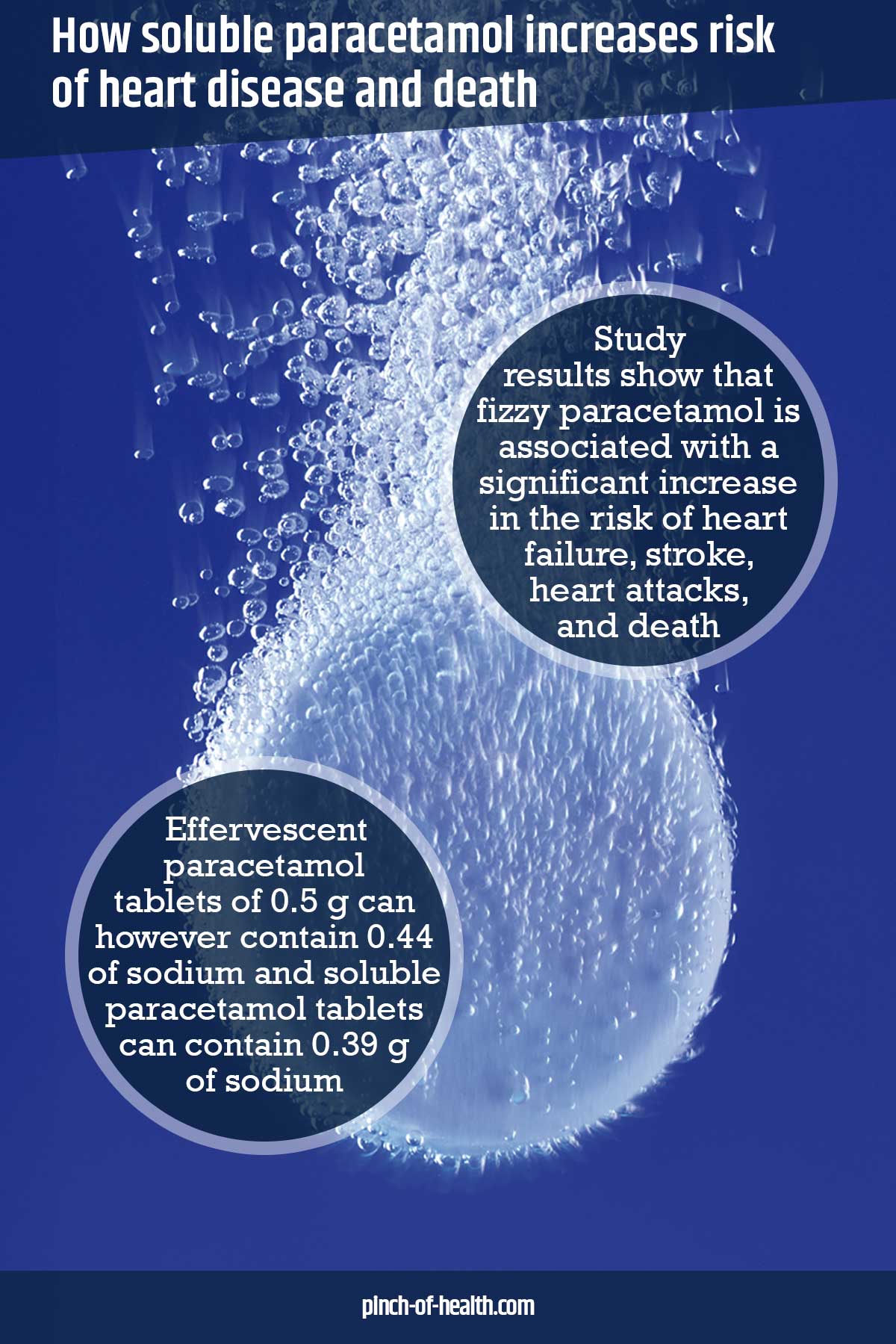The results of a study of almost 300,000 participants warn that individuals should try avoiding using salt containing fizzy, dissolving paracetamol. The study results show that fizzy paracetamol is associated with a significant increase in the risk of heart failure, stroke, heart attacks, and death.1✅ JOURNAL REFERENCE
DOI: 10.1093/eurheartj/ehac059
Sodium is often made use of to assist medications like paracetamol in dissolving and disintegrating in water. The effervescent paracetamol tablets of 0.5 g can however contain 0.44 of sodium and soluble paracetamol tablets can contain 0.39 g of sodium.
If an individual were to take the maximum recommended daily dose of two 0.5 g tablets every 6 hours, they would be consuming 3.5 of sodium if taking effervescent tablets and 3.1 g of sodium if taking soluble tablets, a dosage exceeding the WHO recommended total daily sodium intake of 2 g a day. There are alternative formulations available that contain a tiny amount or no sodium at all.
Excessive dietary salt is a known major public health issue and is linked to an increase in cardiovascular disease and death risk in hypertensive individuals. The evidence of a related risk for individuals without high blood pressure is however inconsistent and it would not be ethical to carry out a randomized controlled trial to examine this.
Data for about 17 million individuals was analyzed taken from an electronic medical database. The researchers compared 4,532 hypertensive individuals who had been prescribed paracetamol that contains sodium with 146,866 hypertensive individuals who had been prescribed non-sodium paracetamol.
A comparison was also made between 5,351 individuals with normal blood pressure who were prescribed paracetamol that contained sodium and 141,948 individuals with normal blood pressure prescribed non-sodium paracetamol. The individuals were between 60 and 90 years old and were monitored for a year.
The risk of heart failure, stroke, or heart attack after 1 year for hypertensive individuals taking paracetamol that contained sodium was found to be 5.6%, while it was 4.6% in individuals taking paracetamol without sodium. The 1-year risk of dying was 7.6% and 6.1%, respectively.
A similar increase in risk was seen in individuals without high blood pressure. The 1-year cardiovascular disease risk was 4.4% in individuals taking paracetamol that contained sodium and 3.7% in individuals taking paracetamol without sodium. The risk of death was 7.3% and 5.9%, respectively.
It was also found that as the intake duration of the paracetamol that contained sodium increased, so did cardiovascular disease and death risk increase.
Cardiovascular disease risk increased by a quarter for hypertensive individuals who had 1 prescription of paracetamol that contained sodium, and it increased by almost a half for individuals who had 5 or more prescriptions of paracetamol that contained sodium.
Similar increases were seen in individuals who did not have high blood pressure. There was also an increased risk of death with increased doses of paracetamol that contained sodium in both individuals with as well as without high blood pressure.



